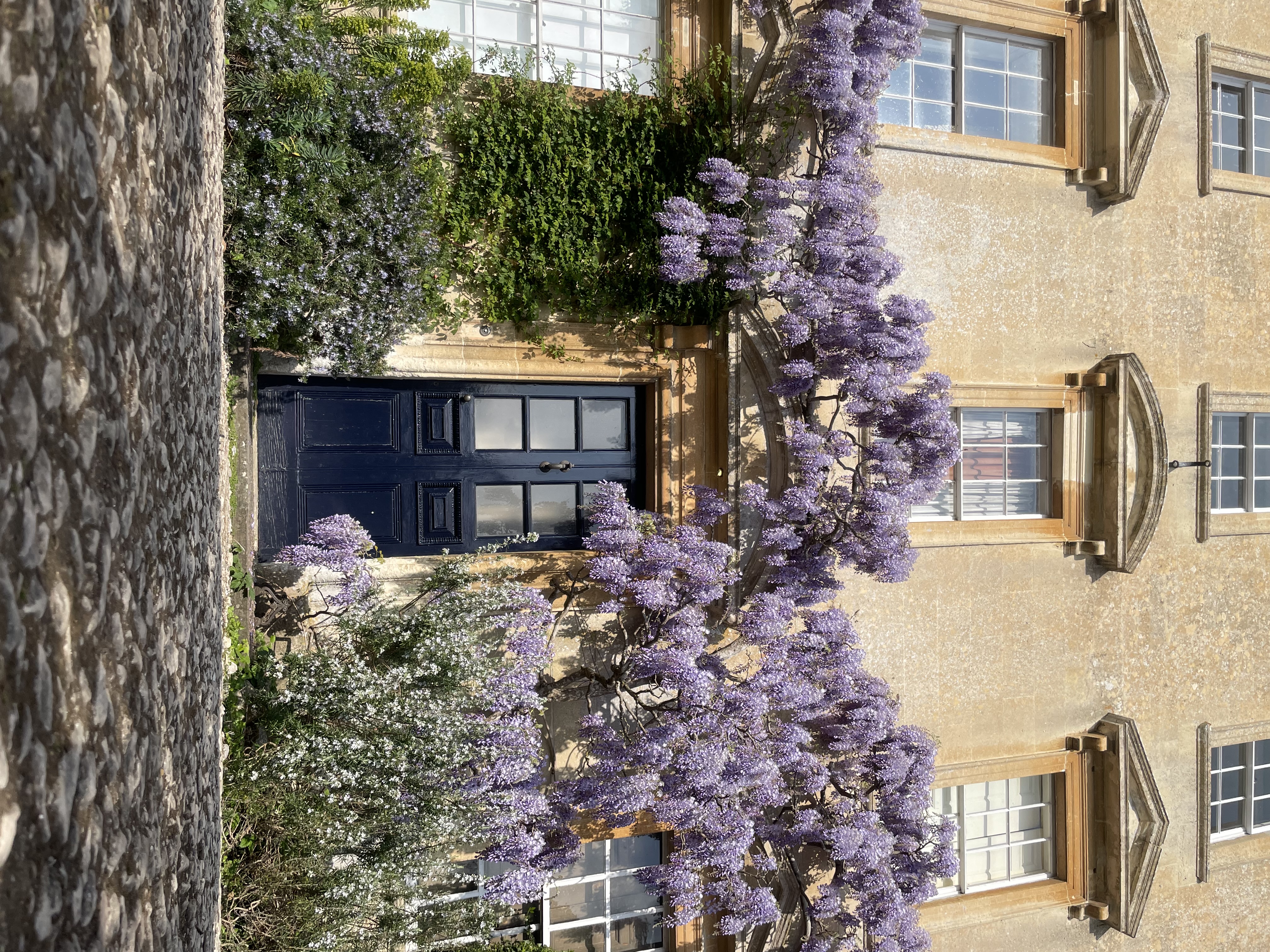Calne-based garden designer, Alex Heath has joined forces with Calne News to bring you monthly garden news.
Alex is the owner of Sulis Design Ltd, a design-only service which focuses on low maintenance, climate resilient gardens and borders for his clients to enjoy and relax in. He also offers a garden lighting design service to create atmosphere, provide security and increase garden usage into the evenings in an environmentally conscious way.
by Alex Heath
The month of May for the last 6 years has been popularly known in the gardening calendar as ‘no mow May’.
In 2019 Plant life international set out on a mission to create “one of the easiest ways to help and connect with wildlife, and the perfect way to start supporting nature in your garden (in May and beyond!)” (source:www.plantlife.org.uk 2025).
So why is it important to consider briefly putting the power tools away?
There are many benefits that are beneficial to both you and your garden, but let’s take a look at a few key ideas.
There is the well-publicised benefit to the rock stars of the garden world the pollinators. By leaving patches of long grass, you may find that clover, daisy, dandelion and other food source flowers appear giving habitat to the various garden pollinators.
Speaking to a bee keeper friend recently, he said that honey bees in particular find dandelions very beneficial as the flowers provide honey and bumble bees an early source of food before many other blooms appear.
Long grass also is an ideal habitat for caterpillars and larvae to feed on and grow, which later develop into butterflies and insects, but also provide food to garden birds such as blackbirds, bluetits and starlings.
Longer patches of grass also provide cover for ground beetles, reptiles and amphibians to safely navigate through the longer grasses without being seen by birds and pets. These animals benefit the garden as they prey on slugs and snails reducing the need for using chemicals around your prized plants and vegetables.
Finally, not mowing reduces the amount of water to keep it green, as the longer grass reduces the amount of evaporation from the ground. This is turn gains you time to do other garden tasks, reduces your water bill and better still have time to sit back and relax, watching the new wildlife enter your garden.
Here are some ideas that you can try, making it work from a practical point of view if you have children, pets or have mobility issues and need short grass for access.
- If you need to mow your grass, try and mow as smaller area as possible, for fun mow paths
through the longer grass making a pattern for adults and children to navigate around. This
also allows children to explore the garden and do bug hunts and have mini adventures
around the new layout. - If your lawn is against a wall, wildlife area or pond let the grass grow in these locations as
these areas will also provide additional habitat to insects and other animals. Leave a small
perimeter area of at least 500mm to give plenty of room for the animals and insects. - Reduce your mowing schedule so instead of mowing on a weekly basis, mow on a bi weekly
or longer and lift the height of the mower deck so it’s not trimming the grass to its lowest
level. - If you use them, try to avoid using chemical lawn treatments during this time. Chemical
residues from treatments labelled animal friendly, have a detrimental effect on wildlife.
Remember to always read the guidance labels on usage. - If you have pets, set aside an area that they can’t access to create a safe haven for animals.
- Keep the no mow May going into June and July by leaving the mower alone or gradually
increasing the amount you cut each time you get the mower out of storage.
By leaving the grass to grow a little bit longer for a month or two you might be surprised by all the
new life that comes into the garden and enjoy having one or two things less to do on your gardening
schedule.
Plant of the month

Wisteria Sinensis is out in full force right now. Brought to the UK 250 years from Asia, and is a real delight for sight and smell. These vigorous plants are long lived and provide great joy. If you have the opportunity, try and visit the Gardens at Iford manor near Bradford-on-Avon, who purportedly have one of the earliest plants to come into the UK and is known to be 160 years old.
Garden jobs for May
- Plant up hanging baskets with annuals to give early summer blooms
- Check lilies for pests like lily beetles, which may damage young plants.
- If overwintering dahlias in pots, look for strong side shoots to make basal root cuttings
- Earth up potatoes when the new shoots start to appear. This boosts the potential harvest from the
plants. - Keep on top of weeds in your vegetable beds
- Keep an eye on greenhouse temperatures and open the doors and windows when the weather gets
too hot but don’t forget to close them at night when the temperature drops. The risk of a late frost is
still present. - Water plants sparingly in the morning before the peak heat occurs. Remember that watering at night
increases the risks of mollusc damage and try to recycle water where possible. - It is now the time for Chelsea flower show, watch the coverage to gain ideas for your garden spaces if
you are unable to attend and don’t forget the ‘Chelsea chop’ on your branched herbaceous perennials. - Protect strawberries and other soft fruit from birds. If using netting ensure there are no holes and
that it is taught and regularly checked, so that no birds get trapped.


